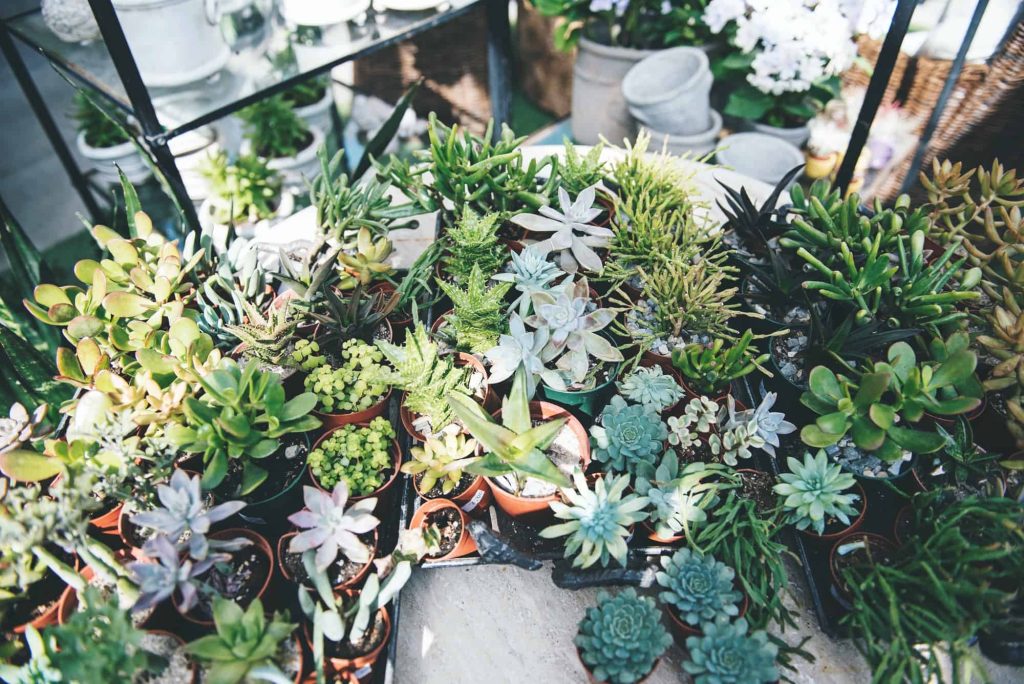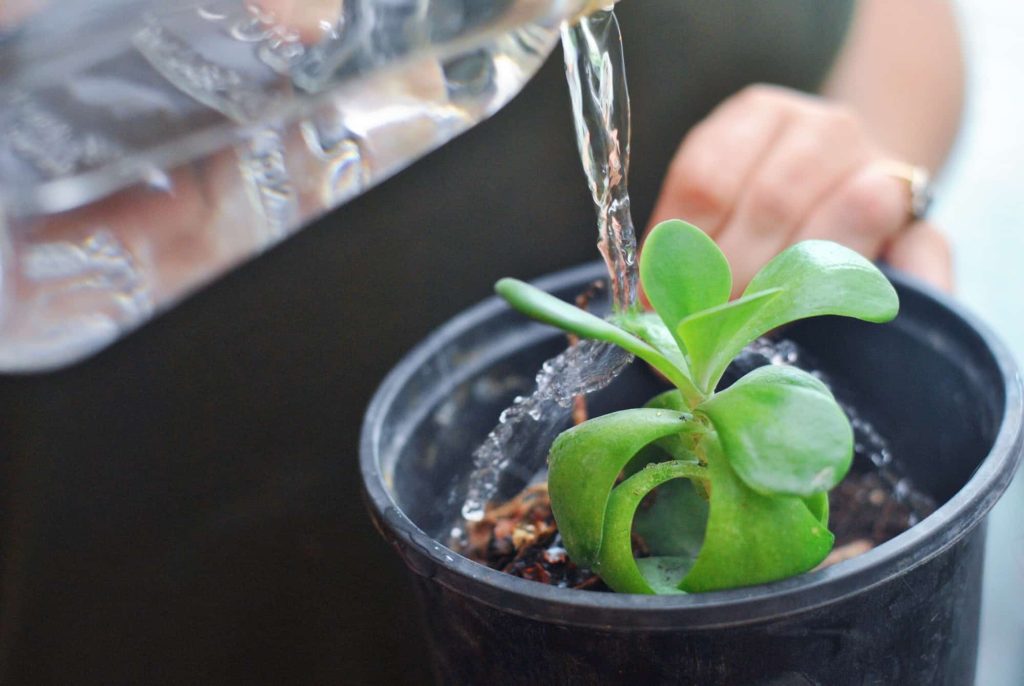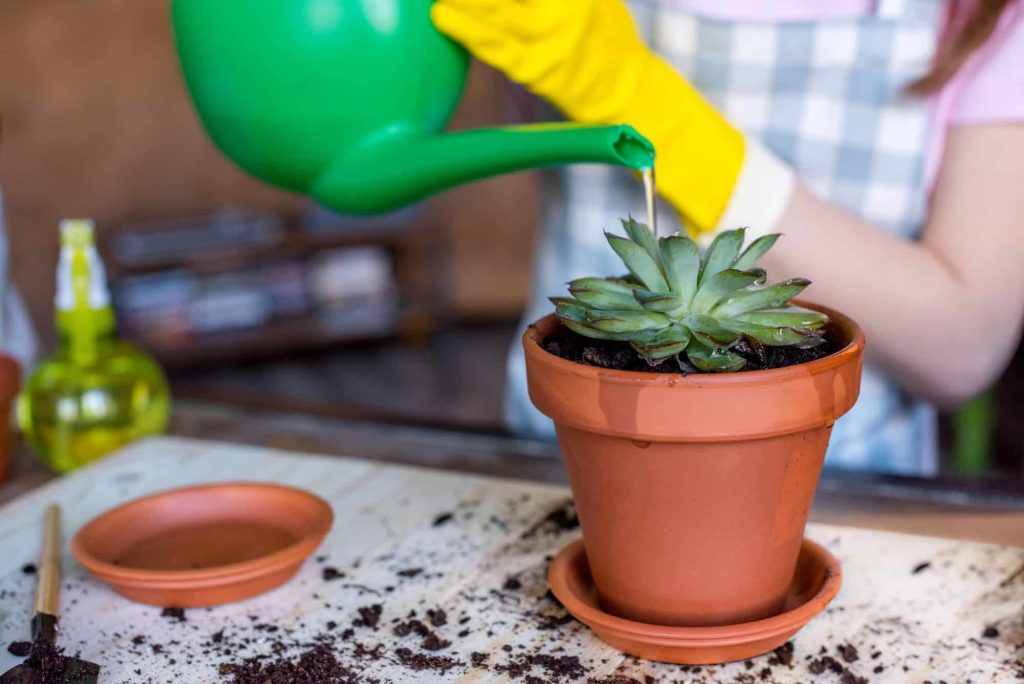Water is an important aspect of every plant’s growth. However, it is also an aspect a lot of farmers have issues with. Watering requirements for various plants differ from the other and you need to pay attention to your plant to understand its watering need. This is also the same for succulents’ plants.
Succulent plants are loved by all and who wouldn’t want them in their home? However, because of the difference in its looks and characteristics, the question on the lips of many gardeners especially beginners is how often should succulent be watered? Of course, it isn’t just enough to purchase a beautiful succulent; it is pertinent to provide the best care guide for it, with no mistakes as this can affect the growth of your plant.
Are you a lover of succulent plants? This is all you need to get the watering schedule right.
Succulents In A Nutshell
Succulents are a group of plants that are known to save water in their leaves.
They are drought resistant and they come in thick leaves, even though, some are found to be thicker than others. The stem, leaves, and roots of the succulent plants are designed to adapt in the dry seasons. These plants are beautiful and colorful and they are loved by many plant growers.
All though succulents are regarded as drought tolerant, the truth is that they will not grow without the right conditions; this is why getting the plant’s watering schedule is quite important.
How Often Should You Water Succulent Plants?
The general rule for watering a succulent is to water it once a week, especially during its growing seasons. succulents’ style of watering is to completely soak the soil, until water comes through the drainage holes, then let it dry completely before watering again. In addition to this, other contributing factors can serve as a determinant for how often your plant is. All of these will be examined one after the other.
- Type of succulent
- Indoor or outdoor growing
- Succulents’ size
- Type of container
1. Type Of Succulents

An important time to water succulents is during their growing seasons. However, there are two different growing seasons and most succulents belong to either of them. They are summer growers (winter dormant) and winter growers (summer dormant).
Summer growers are succulents that are actively growing in the summer i.e., May to August, and are dormant in the winter (November to February), but the winter growers are succulents that are growing actively in the winter and become dormant in the summer. You cannot understand your plant’s water need if you do not know which growing seasons your plant falls into.
We recommend that you water your succulents once a week during their growing seasons, and water even more during their dormancy seasons. This will keep the plant looking fresh and do not shrink.
However, do not overwater your succulents as this can attract root rot, also, ensure your plant dries completely before watering again. Below is a table of some succulents that belong to each growing season.
Winter Growing Succulents
For additional clarification, here’s a list of winter-growing succulents we know today.
| Aloe | Sedeveria | Talinum | Tylecodon |
| Aeonium | Graptopetalum | Peperomia | Sansevieria |
| Bowiae | Dioscorea | Sedum | Astroloba |
| Crassula | Bulbine | Othonna | Bowiea |
| Gibbauem | Avonia | Dudelya | Fouqueria |
| Kalanchoe | Cotyledon | Ceraria | Haemanthus |
| Pachyveria | Haworthia | Anacampseros | Pachycormus |
| Sarcocaulon | Stomatium | senecio | Portulacaria |
Summer Growing Succulents
Here’s a list of summer-growing succulent plants.
| Aloinopsi | Alluadia | Agave | Adenium |
| Brachystelma | Didieria | Cyphotstemma | Cissus |
| Dorstenia | Echevia | Euphorbia | Fockea |
| Ibervillea | Ipomoea | Huernia | Jatropha |
| Synadenium | Operculicarya | Trichodiadema | Lithops |
| Titanopsis | Raphionacme | Adenia | Pseudolithos |
| Trichocaulon | Xerosycyos | Sempervivum | Plumeria |
| Sinningia | Stapelian | Stapelianthus | Sempervivum |
2. Indoor Or Outdoor Succulents
Where your plant is grown and raised will also determine how often it should be watered. This is because light, humidity, air, and temperature that your plant receives in a different location are different and it is only wise that this is taken into consideration while watering.
Succulents grown outdoor will be faced with a high temperature, windy air, hence the water in the soil will dry up fast. This indicates that the plants outdoor will be watered more frequently than those indoor.
Depending on where your succulents are placed indoor, and the amount of care they are exposed to i.e., light, humidity, etc. If your succulent is placed in a cool and humid room, you should water less frequently so it doesn’t develop root rot or other infections.
3. Succulents’ Size
How big or small your succulent is also a determinant factor to how often you should water them.

Succulents with less thick leaf stem and have small size will receive more water than the ones with thick skin, stem, and big size. This is because the plants with thick-leaved can store in more water than thin-leaved plants, hence they can stay without being watered for a while.
4. Type Of Container
The frequency with which you water your succulent plant is also dependent on the type of container that is used to grow them, whether they are containers with drainage holes or not. It is recommended that you grow your succulents in containers with more than one drainage hole.
This will allow a proper flow of water, especially the excess ones, bear in mind that the succulents do not like to sit in water, hence a drainage holed container will prevent your plant from infections. However, if you do purchase a container without drainage holes, you should water your plant less often, also ensure you check if the soil is thoroughly dry before watering again.
Also, if your succulent is grown in large containers, you should water less as this container contains more soil, that can hold moisture for a long time. However, if your pot is small, you should water more often because the water in it will dry faster.
Final Thoughts
The two common problems that can affect your succulent is overwatering and underwatering. Overwatering is giving your succulents too much water, while underwatering is providing less water.
Overwatering your plant can lead to root rot and other infections for your plant, while underwatering leaves your plant looking unkempt and ugly. Although it is so that succulents can tolerate a little neglect, it is best not to start with such in mind.
Ensure your soil is completely dry before watering again. If you find your plant to be underwatered, you can restore its health by increasing your water frequency. If your plant is overwatered, restrain from watering for a while, take out the plant, and dust off the soil attached to it.
Look through the root of your plant, if you find any rot, cut it off. Let your plant dry for some days, before returning it to new and fresh soil.

